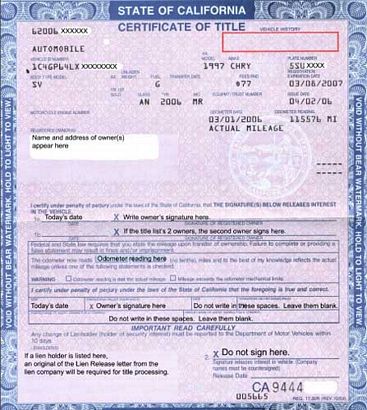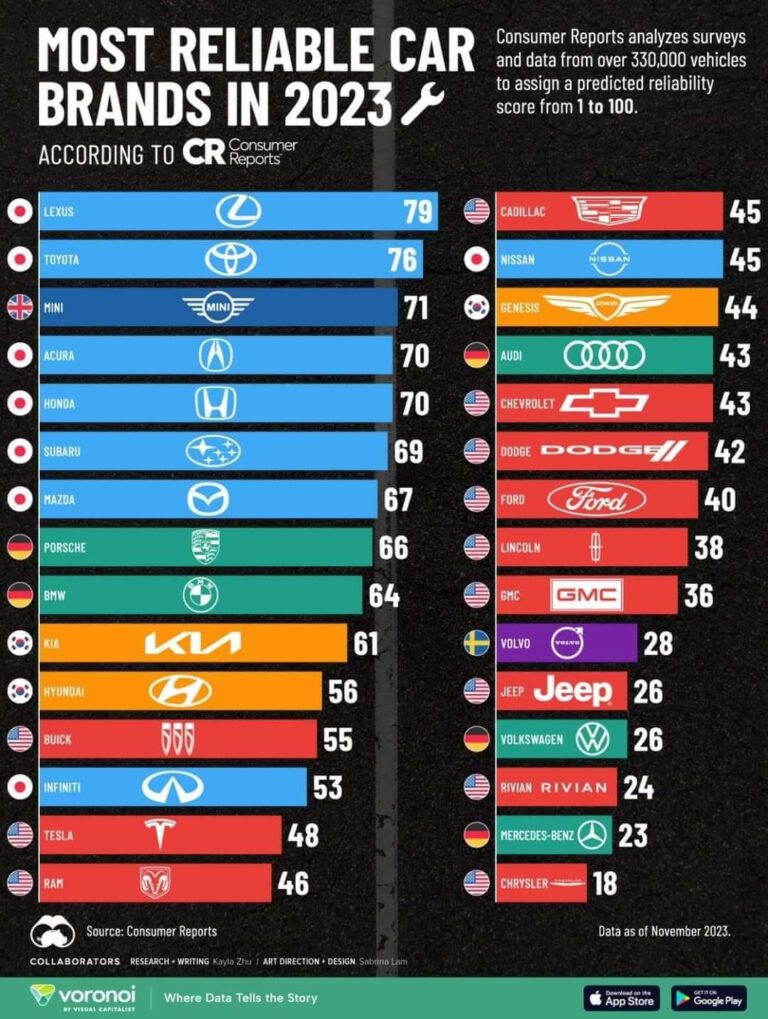How To Sell A Brand New Car: A Comprehensive Guide
How To Sell A Brand New Car: A Comprehensive Guide cars.truckstrend.com
Selling a brand new car might seem counterintuitive, perhaps even a bit perplexing to some. After all, why would someone part with a vehicle they’ve just acquired, often after much anticipation and financial commitment? Yet, life is unpredictable. Circumstances can shift rapidly – a sudden relocation, an unexpected financial challenge, a change in family needs, or even a case of buyer’s remorse can prompt the need to sell a car that still carries that "new car smell." Unlike selling a used vehicle with thousands of miles and years on the clock, selling a brand new car presents a unique set of challenges and opportunities. This comprehensive guide will walk you through the intricacies of navigating this niche market, ensuring you maximize your return and complete the transaction smoothly and confidently.
1. Defining "Brand New" in the Context of Resale
How To Sell A Brand New Car: A Comprehensive Guide
Before diving into the "how-to," it’s crucial to clarify what "brand new" truly means when you’re selling as a private individual.
- Manufacturer’s Statement/Certificate of Origin (MSO/MCO): The gold standard for "brand new." If the car has never been registered in anyone’s name (not even yours), you’ll possess the MSO/MCO. This document is the vehicle’s birth certificate and allows the buyer to be the first registered owner.
- Title (if issued): If you’ve registered the car in your name, even for a day, it technically becomes a "used" car in the eyes of most DMVs and insurers. However, if it has very low mileage (typically under 500 miles, often under 100) and is in pristine condition, it can still be marketed as "like-new" or "virtually brand new."
- Mileage: Crucially low. The fewer miles, the more "new" it feels to a buyer. Every mile adds to its "used" status.
- Condition: Absolutely pristine. This means no scratches, dents, wear on seats, or any signs of previous use. All original accessories, protective plastics, and manuals should be present.
The distinction between having an MSO/MCO and a registered title is vital for both pricing and the buyer’s perception.

2. Why Sell a Brand New Car? Common Scenarios
While uncommon, there are several compelling reasons why someone might need to sell a recently acquired new car:
- Buyer’s Remorse/Wrong Fit: The car simply didn’t meet expectations, or after a few drives, it became clear it wasn’t the right fit. Perhaps a better, more suitable vehicle became available shortly after purchase.
- Financial Reversal: Unexpected job loss, significant medical bills, or a major life event necessitates freeing up capital by liquidating assets.
- Sudden Relocation: Moving to a city where car ownership is impractical, unnecessary, or too expensive (e.g., dense urban areas with excellent public transport).
- Inheritance or Gift: Receiving a new vehicle that you don’t need, already have, or prefer to convert into cash.
- Investment/Speculation Gone Wrong: In rare cases, an individual might have bought a limited-edition vehicle with the intent to flip it, only for the market to shift unfavorably.

3. The Unique Challenges of Selling a Brand New Car Privately

Selling a new car isn’t just selling a used car with low miles; it has its own set of hurdles:
- Immediate Depreciation Hit: This is the biggest bitter pill. The moment a new car leaves the dealership lot, it loses a significant portion of its value – often 10-20% within the first few weeks or months. You are absorbing this initial, steep depreciation.
- Competing with Dealerships: Buyers can get financing, comprehensive warranties, and often attractive incentives (cash back, low APR) directly from a dealer. You need to offer a compelling reason (primarily price) for them to choose a private sale over a dealer experience.
- Financing Liens: If you financed the car, you’ll have a lien on the title. This means you must pay off the loan and obtain a lien release before you can transfer a clear title to the new owner, adding complexity to the transaction.
- Lack of Sales Tax Advantage: In most states, buyers will still pay sales tax on your "used" new car when they register it, similar to buying from a dealer. You cannot offer the same trade-in tax credit that dealerships can.
4. Meticulous Preparation: Showcasing Perfection
When selling a virtually new car, perfection is non-negotiable. Buyers expect it to be flawless.
- Documentation is King:
- Manufacturer’s Statement/Certificate of Origin (MSO/MCO): Absolutely vital if the car has never been registered.
- Original Purchase Agreement/Invoice: Shows the original MSRP, options, and what you paid. This adds transparency and credibility.
- Clear Title (if issued): Ensure it’s free of any liens.
- Owner’s Manuals, Service Records (if any minor service performed), All Keys: Buyers expect everything that came with the new car.
- Pristine Condition is Paramount:
- Professional Detailing: Invest in a thorough interior and exterior detail. This includes paint correction for any minor swirl marks, spotless glass, a meticulously cleaned interior, and a clean engine bay.
- Remove All Personal Belongings: No trace of you should remain.
- Check All Features: Ensure everything works perfectly – lights, infotainment, climate control, power windows, etc.
- Tire Pressure & Fluid Levels: Small details matter.
- Photography that Sells:
- High-Resolution, Well-Lit Photos: Take photos in good natural light (golden hour is excellent).
- Show All Angles: Exterior (front, back, sides, wheels, badging), interior (dashboard, seats, trunk, cargo area), and the engine bay.
- Highlight Key Features: Close-ups of unique wheels, infotainment screen, special trim, panoramic roof, etc.
- Odometer Shot: Include a clear photo of the low mileage on the odometer.
- Short Video Walkthrough: A video can provide a more comprehensive view and build trust.
5. Strategic Pricing: Finding the Sweet Spot
This is arguably the most challenging aspect. You want to recoup as much as possible, but you must be realistic about the depreciation.
- Research, Research, Research:
- Online Valuation Tools: Use reputable sites like Kelley Blue Book (KBB.com), Edmunds.com, and NADAguides to get values for new and used versions of your exact make, model, trim, and options.
- Dealer Websites: Look at local dealership listings for the same new car. Note their advertised prices, including any incentives.
- Private Listings: Search for similar "nearly new" cars on classified sites.
- Account for Immediate Depreciation: You must price your car below a dealer’s new car price to be competitive. Your advantage is offering an identical product without the overhead, allowing you to be cheaper. A common starting point is 5-10% below the lowest dealer new price, adjusting for how "new" it truly is (MSO vs. registered title) and local market demand.
- Factor in Options/Packages: Desirable factory options add value, but don’t expect to recoup their full cost. Aftermarket accessories generally add little to no value.
- Be Prepared to Take a Loss: This is almost inevitable. Your goal is to minimize that loss. Emotional attachment to what you paid must be set aside for a successful sale.
6. Effective Marketing: Reaching the Right Buyers
Once prepared and priced, it’s time to get the word out.
- Online Marketplaces are Key:
- Dedicated Car Sites: AutoTrader, Cars.com, CarGurus. These attract serious buyers actively looking for vehicles.
- General Classifieds: eBay Motors, Facebook Marketplace, Craigslist. Be cautious of scams, but these offer broad reach.
- Manufacturer-Specific Forums/Groups: If your car is a niche model (e.g., a specific sports car, luxury SUV), brand-specific forums or Facebook groups can connect you with enthusiasts.
- Craft a Compelling Ad:
- Catchy Headline: "Brand New [Year Make Model] – Save Thousands Off MSRP!" or "Under 100 Miles – Full Factory Warranty!"
- Detailed Description: Include all features, packages, color, original MSRP, and why you’re selling (be honest but brief).
- Highlight "New Car" Benefits: Emphasize the full factory warranty, no prior owner, no wear and tear, and the latest technology.
- Clear Call to Action: "Serious inquiries only, contact for viewing and test drive."
- Be Transparent: Always disclose the exact mileage, its registration status (MSO or titled), and any minor imperfections (though ideally, there should be none).
7. Navigating Inquiries, Showings, and Test Drives
As inquiries come in, professionalism and safety are paramount.
- Prompt and Professional Communication: Respond quickly and courteously to all legitimate inquiries. Be prepared to answer questions about the car’s features, history, and your reason for selling.
- Safety First for Showings:
- Public Meeting Spot: Arrange to meet in a well-lit, public place like a shopping center parking lot or even a police station parking lot (some offer designated safe zones).
- Bring a Companion: Have a friend or family member accompany you.
- Never Disclose Unnecessary Personal Information.
- Test Drives:
- Verify Driver’s License and Insurance: Ask to see their valid driver’s license and proof of insurance. Take a photo of their license (with their permission).
- Always Accompany the Driver: Sit in the passenger seat.
- Set a Route: Plan a short, safe route that allows the buyer to experience the car’s capabilities without excessive speed or dangerous maneuvers.
- Keys in Hand: Never leave the keys unattended with a potential buyer.
8. Negotiation and Finalizing the Sale
This is where the deal gets done. Be prepared, secure, and meticulous.
- Be Prepared to Negotiate: Buyers will always try to get a better deal. Have your minimum acceptable price in mind, but be flexible enough to close the sale. Your initial price should leave some room for negotiation.
- Payment Security is Paramount:
- Cashier’s Check/Bank Check: Verify with the issuing bank during business hours. Call the bank directly using a number you independently look up (not one provided by the buyer). Fraudulent checks are common.
- Wire Transfer: Generally the safest method, as funds are directly transferred between banks. Confirm receipt in your account before releasing the car or title.
- Avoid Personal Checks: Too risky, they can bounce days later.
- Cash: Only for smaller amounts, and always count it carefully in a secure location (e.g., your bank).
- Paperwork Completion:
- Bill of Sale: Essential for both parties. Include vehicle details (VIN, make, model, year, mileage), agreed-upon price, date, and signatures of both buyer and seller.
- Title Transfer: If you have the title, sign it over to the buyer according to your state’s DMV requirements. If there’s a lien, you’ll need to pay it off and get the lien release.
- Odometer Disclosure Statement: Required by law in most places.
- Release of Liability: In some states, you can file this with the DMV to absolve yourself of responsibility for the car once sold.
- Lien Payoff Process (If Applicable): Contact your lender for a payoff quote. Ideally, the buyer’s funds will go directly to the lender for the loan amount, with any remaining equity paid to you. The lender will then release the title to you (or directly to the buyer in some cases). This process requires careful coordination and trust from both parties.
9. Legal and Financial Considerations
A few final points to consider for a smooth post-sale experience.
- Sales Tax: The buyer will typically be responsible for paying sales tax to their state’s DMV when registering the vehicle, regardless of whether it’s bought new or used from a private party.
- Warranty Transfer: Most factory warranties transfer to the new owner, but it’s wise to check the specific terms of your car’s warranty in the owner’s manual or by contacting the manufacturer.
- Insurance: Remove the car from your insurance policy after the sale is complete and the buyer has taken physical possession of the vehicle and keys.
- Capital Gains/Losses: Consult a tax professional. While unlikely to generate a capital gain when selling a personal vehicle, a significant loss might have tax implications (though usually not deductible for personal property).
Selling a Brand New Car: Key Information & Cost/Benefit Summary Table
| Aspect of Selling | Description/Action Required | "Cost" (Effort/Financial) | "Benefit" (Outcome) |
|---|---|---|---|
| Preparation | Detailing, gathering docs (MSO/Title, manual, keys) | Low-Moderate ($50-200 for detail) | Attracts buyers, justifies price, faster sale |
| Documentation | MSO/Title, Bill of Sale, Odometer Disclosure | Low (time for paperwork) | Legal protection, smooth ownership transfer |
| Photography | High-quality images & video, showcasing pristine condition | Low (time & effort) | Increases ad engagement, builds buyer trust |
| Pricing Research | KBB, Edmunds, Dealer pricing, competitor analysis | Moderate (time & comparison) | Realistic valuation, competitive edge, faster sale |
| Online Listings | AutoTrader, Cars.com, FB Marketplace, eBay Motors | Moderate ($0 – $100+ per listing) | Wide reach to serious, targeted buyers |
| Communication | Prompt, professional responses to inquiries | Low (time & professionalism) | Builds rapport, converts leads into viewings |
| Showings/Test Drives | Safety precautions, accompanying buyer, pre-set route | Moderate (time, personal safety) | Allows buyer to evaluate, builds confidence |
| Negotiation | Firm but flexible approach, knowing your minimum price | Moderate (stress, strategic thinking) | Finalizes sale, maximizes return within market |
| Payment Security | Verify cashier’s checks, wire transfers | High (due diligence, bank visits) | Avoids fraud, ensures full and secure payment |
| Paperwork Transfer | Title, Bill of Sale, Lien Release (if applicable) | Moderate (DMV visit, lender coordination) | Legal ownership transfer, peace of mind for seller |
| Depreciation Hit | Inevitable loss from |





